
 |
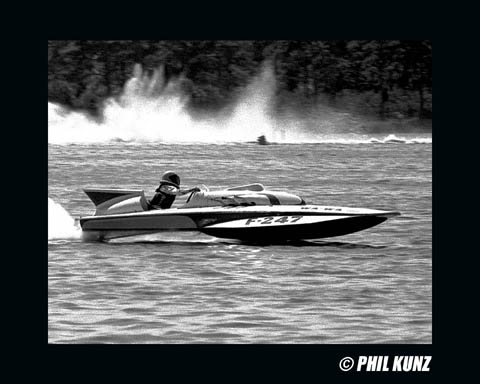 |
F - class
The 266 cubic inch class started in 1934 with modified 225 cubic inch motors. In 1948, the class was split into 2 classes. The highly modified racing motors became 225 Div l. The less modified ones became the 225 Div ll. In the mid 1950's, the Div.1 became the 266 class which allowed the 265 small block engine. During the 1950's, the hulls started using the fuel-injected in-line 6-cylinder, destroked DeSoto hemi's, Mercury flathead V-8, and Chevrolet 265. During the 1960's, the 266 class ran mostly Chevy, Ford, and Plymouth engines. In the early 1970's, the class went to 305 cubic inch and ever since, the Chevy dominated the class. The hulls had a minimum length of 16 ft. |
| E - class
The 280 cubic inch class was started in 1957 as a stock & economical alternate to the modified 225 and 266 cubic inch classes. The motor most used was the Chevy 265 that came out in 1955. The hulls had a minimum length of 16 feet, with no minimum weight. In the early 60's, the Buick 215 cubic inch V-8 proved very competitive in lightweight hulls. By the late 60's, the Plymouth 273 cubic inch had become the motor of choice. This motor dominated until the mid 70's when the class became the 5 Litre Stock class. |
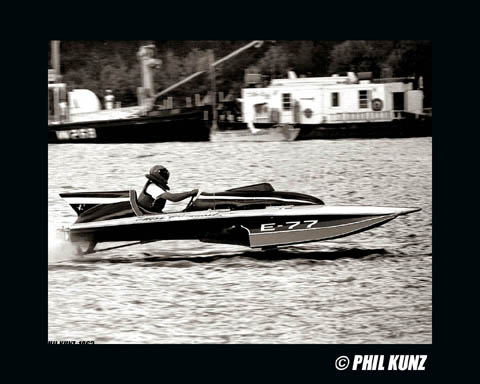 |
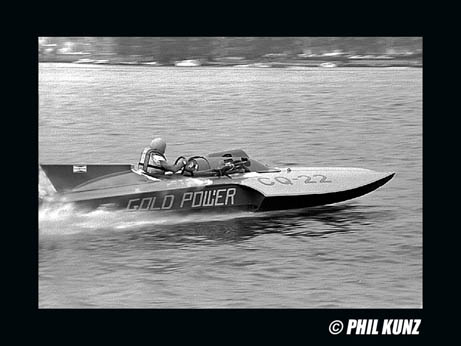 |
CQ - class
The 360 cubic inch class was the Canadian version of the American F class. This class was allowed one single 4-barrel carburetor running gasoline. This motor was close to equal to the United States class running the 305's with fuel-injection and alcohol. They had similar hull rules. |
| J - class
The "J" class was the 7 Litre stock class started in 1970 as the stock version of the "H" class. The motors were mostly stock (balanced & blueprinted) and ran on gas with a single 4-barrel carb. The "J" class ran up until the early 90's and then went to a larger motor size and became the GNH's (Grand National Hydro), which still runs as a class now. Their hulls were a minimum of 19 feet. In the mid-1970's, some of the "J" and "H" class hydroplanes became the Grand Prix class. |
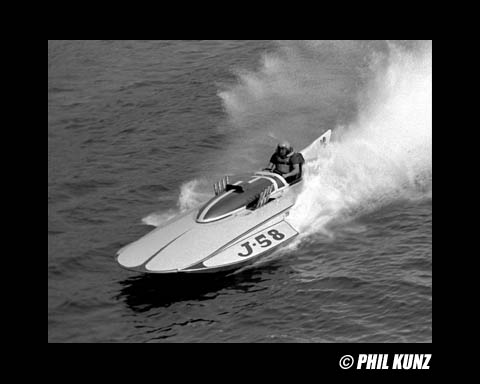 |
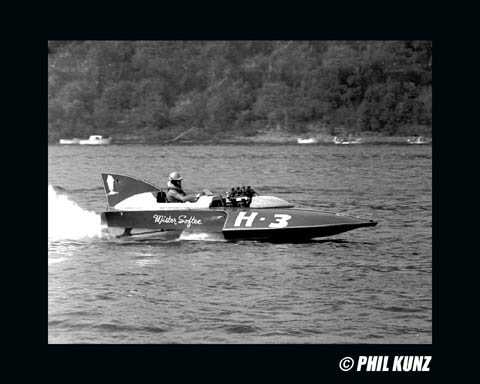 |
H - class
The 7 Litre class (427 cubic inch) started after WW II, as there was a surplus of airplane, marine, and bus engines of that size. They ran on alcohol and were allowed to use blowers and superchargers. The boats became lighter in the 1950's and they started using big block automotive engines as they became available. All of the big three (Chrysler, Ford, and G.M.) shared wins in the 1960's and 1970's. They had to be a minimum of 19 feet long and about 1960 typically weighed about 2000 pounds. The "H" class had their last Nationals in 1986 and then ceased to exist. |
| GP - class
The Grand Prix Class started in Canada. In 1974, they merged with some of the "H" class hydroplanes and became a United States class. The Gran Prix Class were governing themselves outside of APBA in about 1980. This class is the only one that has the same rules outside of the United States. The Grand Prix Class hydroplanes run also in Canada, Australia, and New Zealand. They currently run 500 cubic inch motors. |
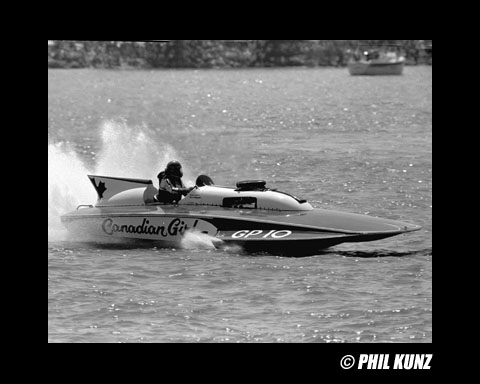 |
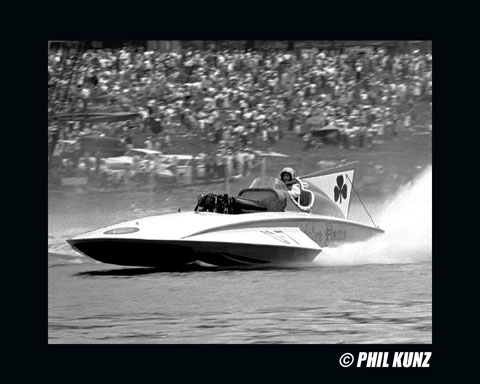 |
U - class
The Unlimiteds were just that. They were allowed any kind of motors as long as the boats were propeller driven. After World War II, there were an abundance of 12 cylinder Allison and Rolls Royce airplane engines. Some boats even ran two motors, both in-line and side by side. During the 60's, 70's, and 80's, twin automotive big-blocks were also tried by many different camps. Only once, in 1967, did a twin automotive powered hydro ever win a race. These airplane engines were used as the motors of choice right up to the mid 1980's when the supplies ran low and the turbines started becoming available. |
| © 2001 Phil Kunz |